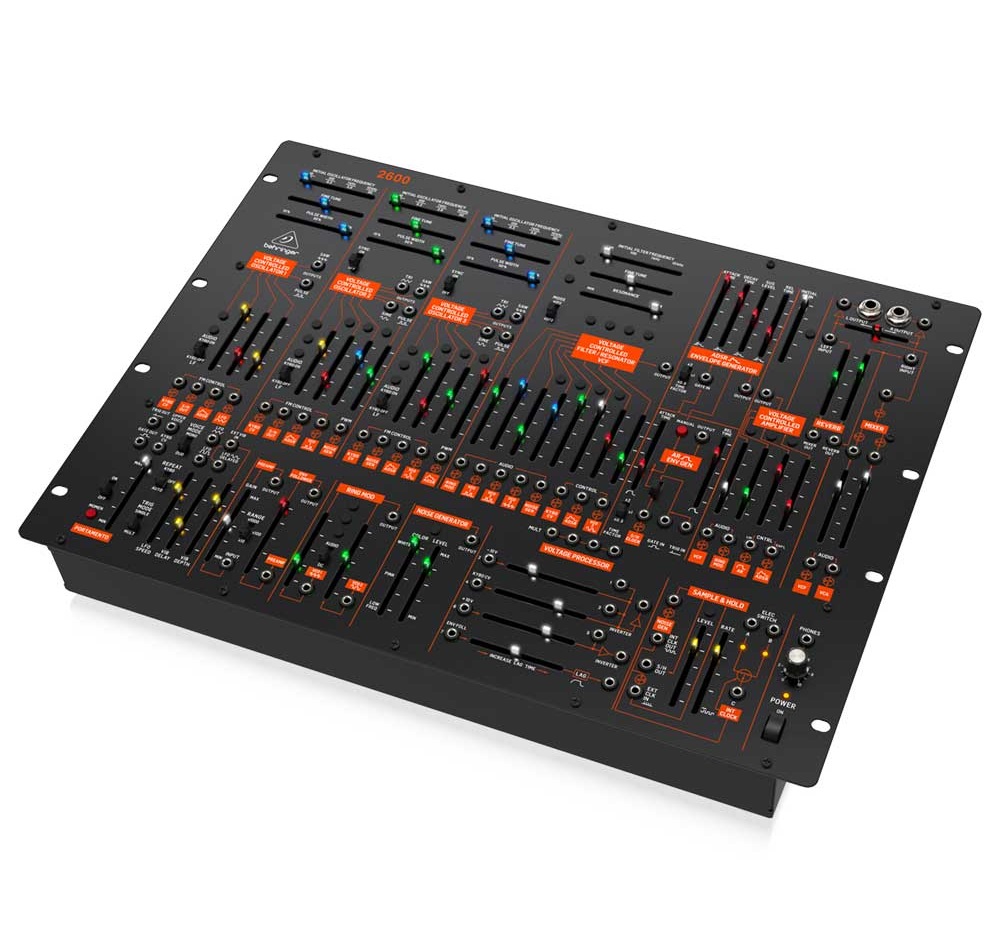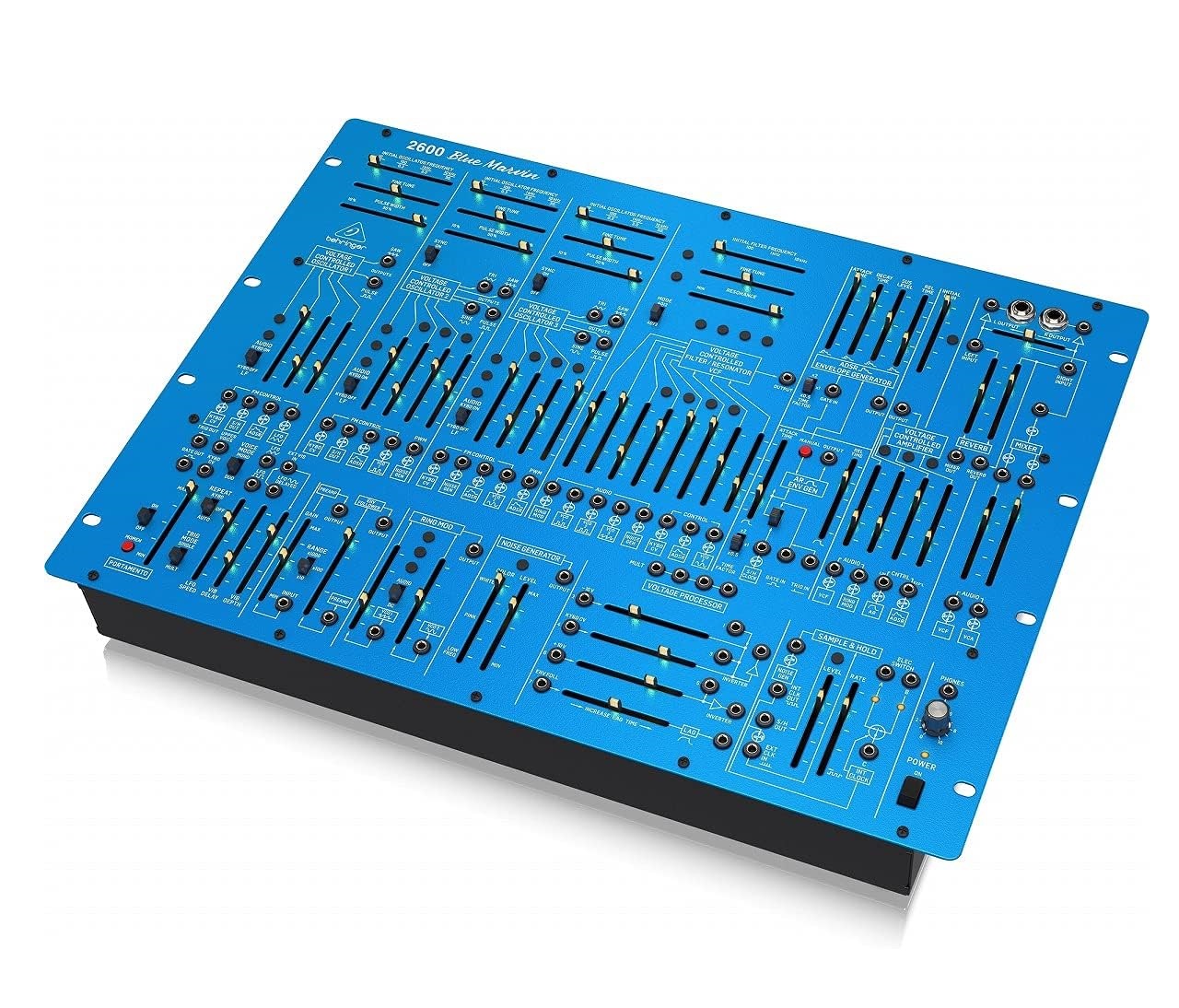Behringer 2600
Electronic Instruments
America
Between 1901 and present
Video
The Behringer 2600 is a semi-modular analog synthesizer that pays homage to the iconic ARP 2600, a legendary instrument from the early days of electronic music. This synthesizer is designed to capture the essence of its predecessor while offering modern features and accessibility. The Behringer 2600 is an ultra-affordable option for musicians seeking to explore a wide range of sounds, from classic electronic tones to experimental textures.
Description and Type of Instrument
The Behringer 2600 is classified as a semi-modular synthesizer, meaning it allows users to start creating music without needing patch cables for every connection. However, it still offers extensive patching capabilities for those who wish to delve deeper into custom sound design. It features three analog oscillators (VCOs), each capable of producing various waveforms such as sawtooth, square, triangle, and sine waves. Additionally, it includes components like lowpass filters (both Moog-style and ARP-style), envelopes (ADSR), LFOs (Low Frequency Oscillators), VCA (Voltage-Controlled Amplifier), ring modulator, noise generator with variable coloration, sample & hold circuitry, voltage processor for advanced modulation control, envelope follower for processing external audio sources like drum machines or guitars through its preamp section.
History
The original ARP 2600 was introduced in North America in the early 1970s by Alan R. Pearlman’s company ARP Instruments Inc., marking a significant milestone in electronic music history on the continent during that century. It was renowned for its semi-modular design that made synthesis accessible without requiring extensive technical knowledge or custom ordering expensive modular systems.
Construction and Types
The construction of the Behringer 2600 mirrors that of its inspiration but with modern manufacturing techniques and materials while maintaining authenticity through matched transistors and JFETs used in vintage designs.There are several variants available:
Standard Model: Offers digital spring reverb emulation.
Blue Marvin and Gray Meanie: These limited editions feature physical spring reverb tanks similar to those found in vintage units.
Features
The Behringer 2600 boasts an impressive array of features:
- Three VCOs with FM inputs allow versatile waveform selection.
- Dual filter options: A smooth Moog-style filter (4012) alongside an ARP-style filter with grainy resonance characteristics.
- Two dedicated LFOs providing pulse and sine wave outputs.
- ADSR envelope generators enable dynamic sound shaping.
- Ring modulator adds metallic timbres; noise generator provides variable coloration from white through pink noise.
- Sample & Hold circuit can create interesting effects when combined with other modules like LFO or ring modulator outputs.
Sound Production
Sound production on the Behringer 2600 involves combining these components creatively:
Waveform Selection: Each oscillator can produce different waveforms which are then mixed together using sliders on the mixer section before being filtered by either type of lowpass filter available onboard – both classic Moog style smooth resonance or typical grainy ARP style depending upon preference set via switchable mode controls located above respective sections within main panel layout itself!
Modulation Capabilities: Use LFO outputs along side sample/hold circuits fed back into themselves via feedback loops created using additional patch cables if desired allowing complex rhythmic patterns emerge organically over time due their inherent nature being based entirely around random chance rather than fixed sequences alone!
Playing Methods
To play or control sounds produced by this synth there are multiple methods available including MIDI connectivity via DIN ports as well USB class-compliant connections allowing integration directly within DAW environments running software sequencers etc., CV/Gate inputs enable Eurorack compatibility too making possible seamless integration alongside other modular gear setups existing today!
Roles in Music
Musicians have used synthesizers like these extensively across genres ranging from pop hits incorporating lush pads all way down deep ambient textures often found throughout experimental works alike due versatility offered here especially considering historical context surrounding original models release back during seventies era pioneers such Stevie Wonder Pete Townshend Herbie Hancock among others utilizing them heavily throughout careers spanning decades now!
FAQ
What are the key features of the Behringer 2600?
The Behringer 2600 is an analog semi-modular synthesizer inspired by the ARP 2600. It features three oscillators, a multi-mode filter, extensive patching capabilities, and built-in effects like spring reverb. Its semi-modular design allows for immediate sound creation without patch cables, while still offering deep customization.
What are the different types of Behringer 2600 models?
Behringer offers several versions of the 2600, including the standard 2600, the 2600 Blue Marvin, and the 2600 Gray Meanie. The Blue Marvin and Gray Meanie models feature high-end components, improved faders, and distinctive color schemes, providing subtle sonic and aesthetic differences from the base model.
What kind of music can be created with the Behringer 2600?
The Behringer 2600 excels in electronic, experimental, and ambient music due to its rich analog sound and deep modulation options. It is also well-suited for techno, synthwave, and film scoring, offering everything from fat basses and leads to evolving soundscapes and complex rhythmic sequences.
 Links
Links
References
 Similar
Similar
Instruments
Other Instrument
Categories



















